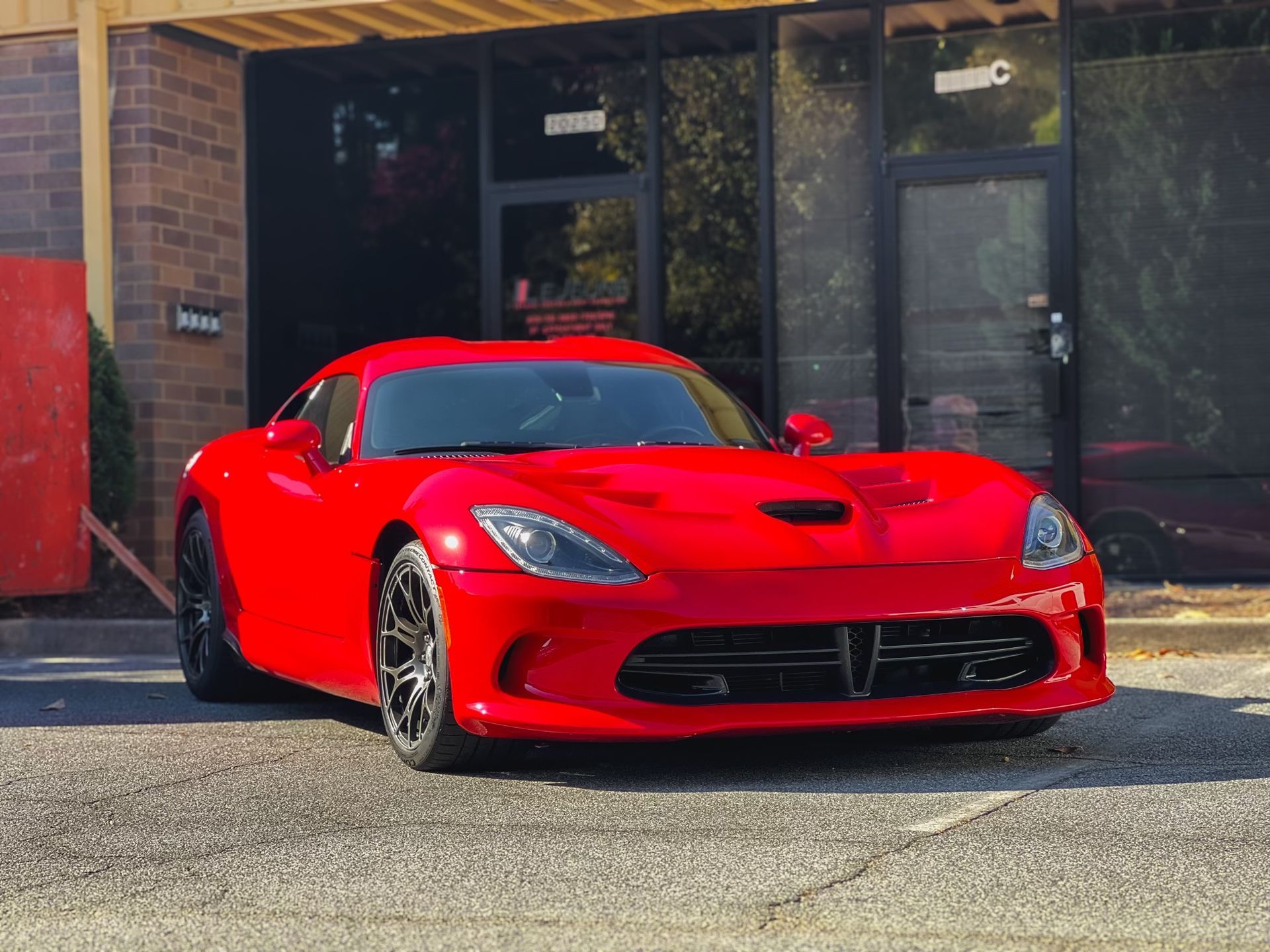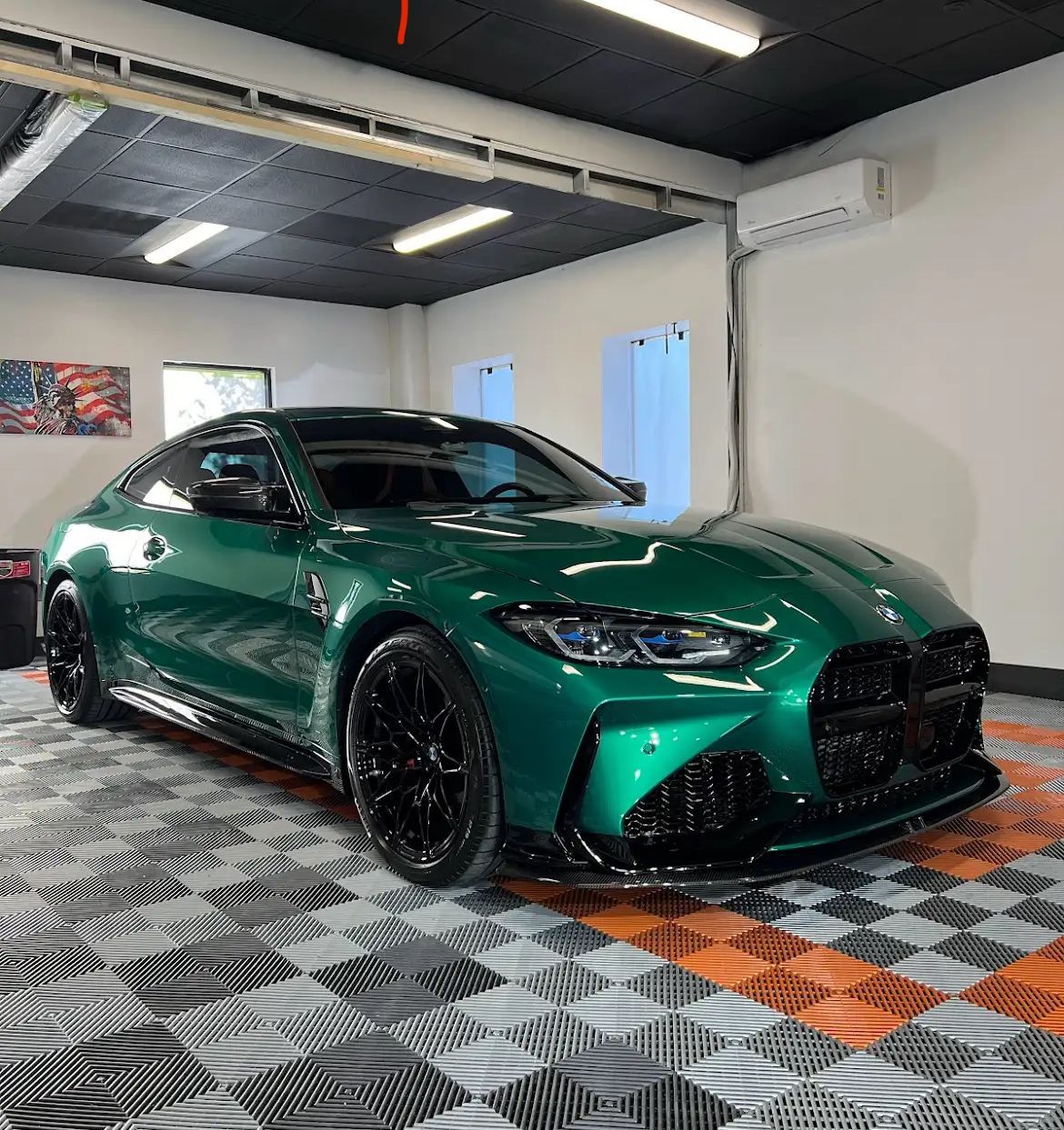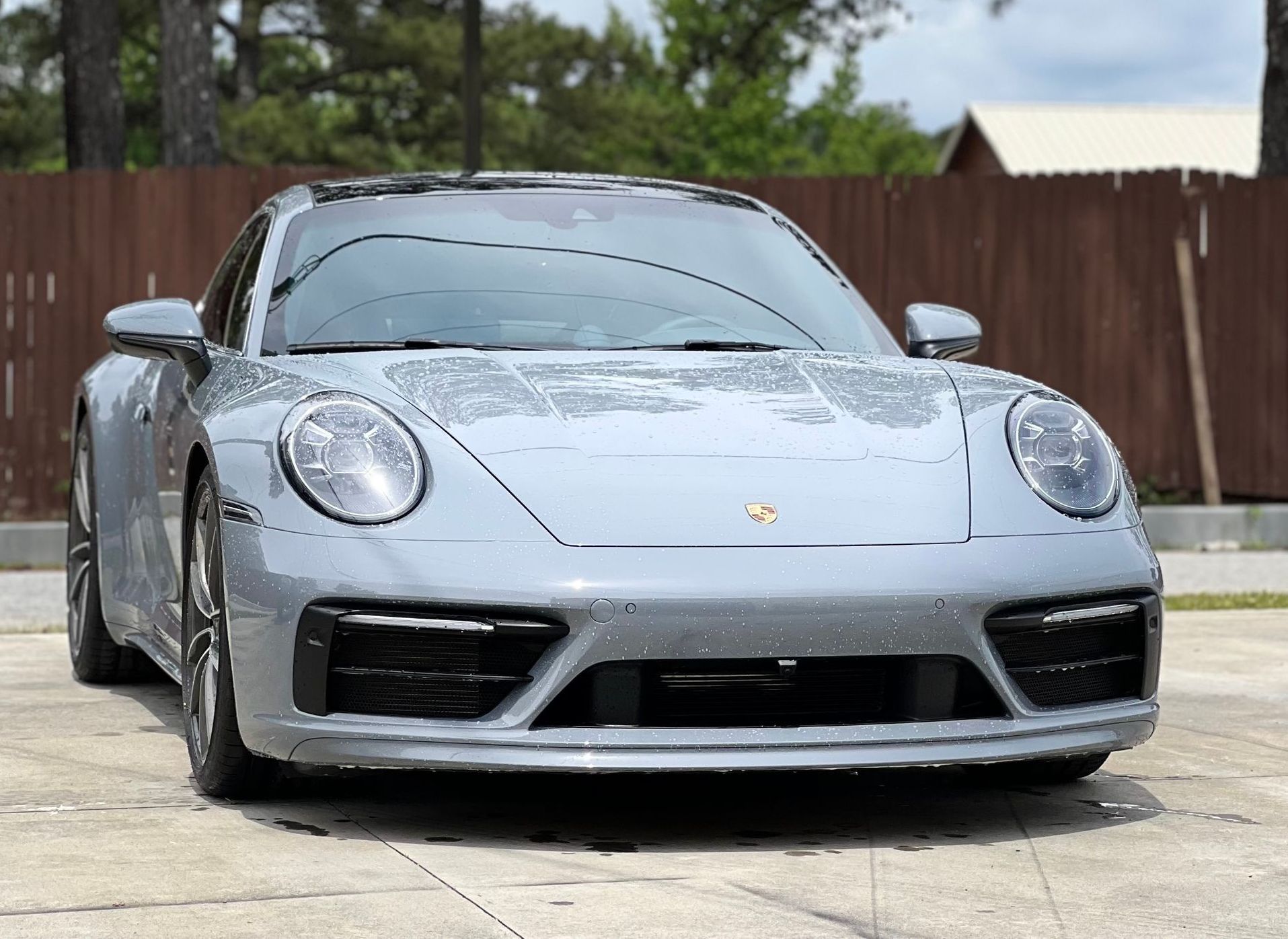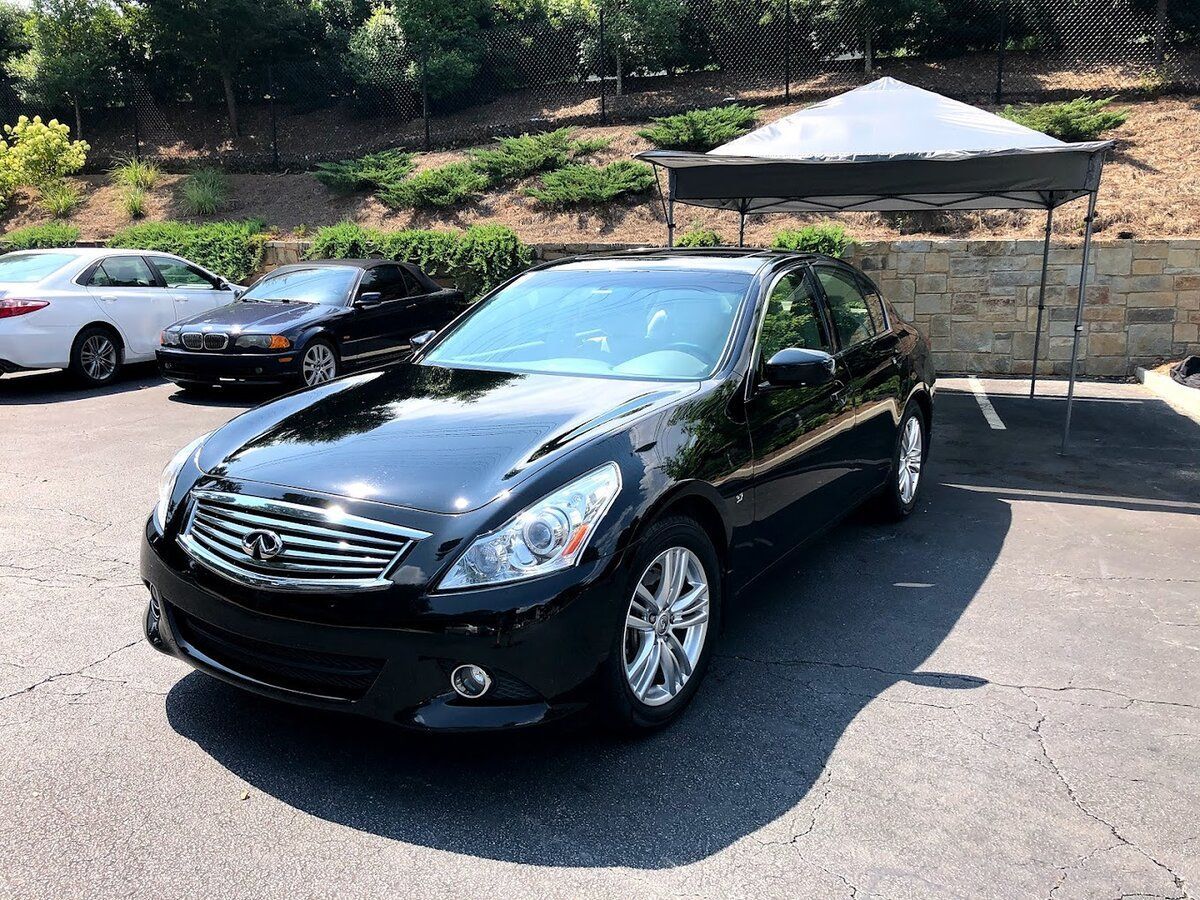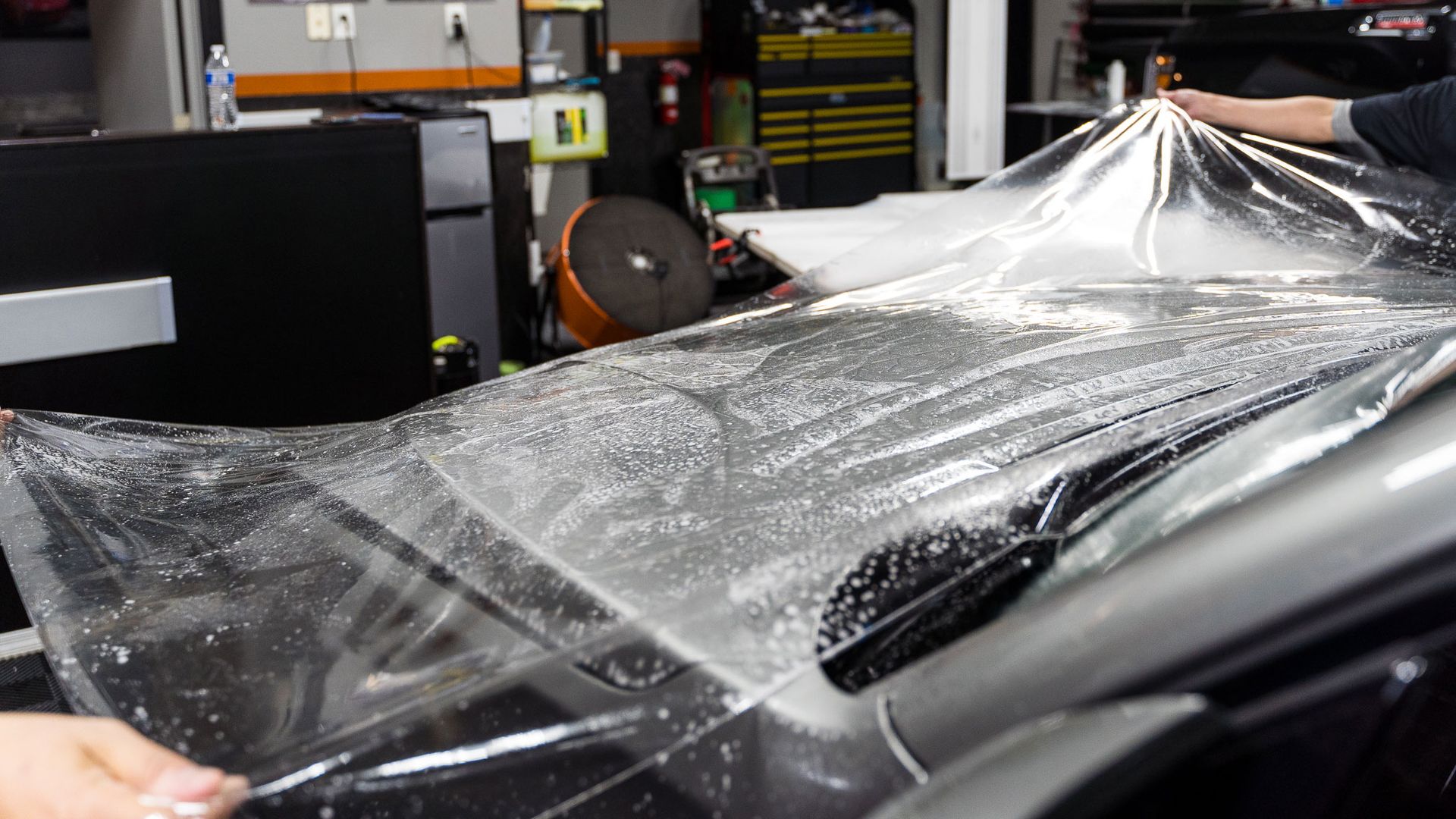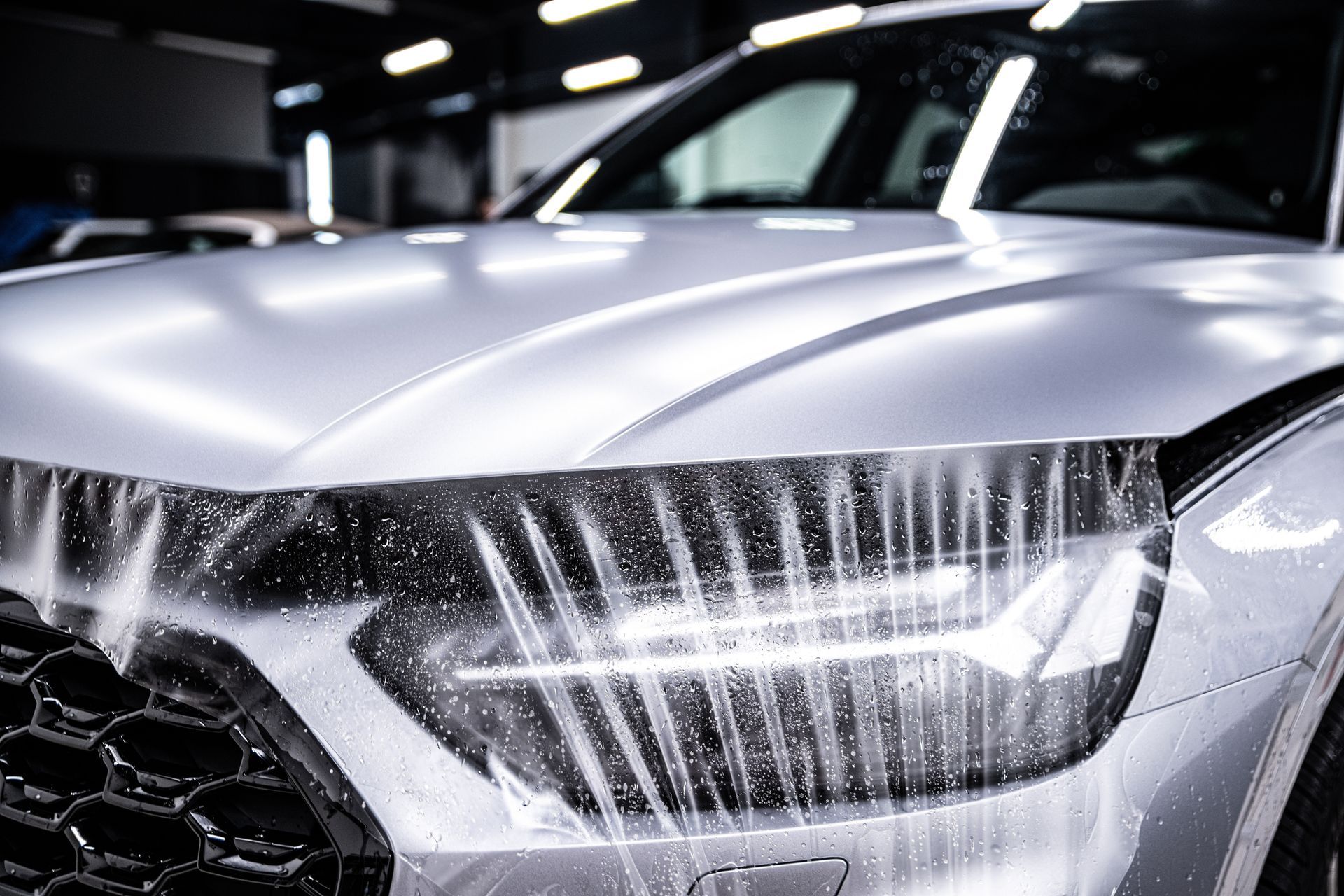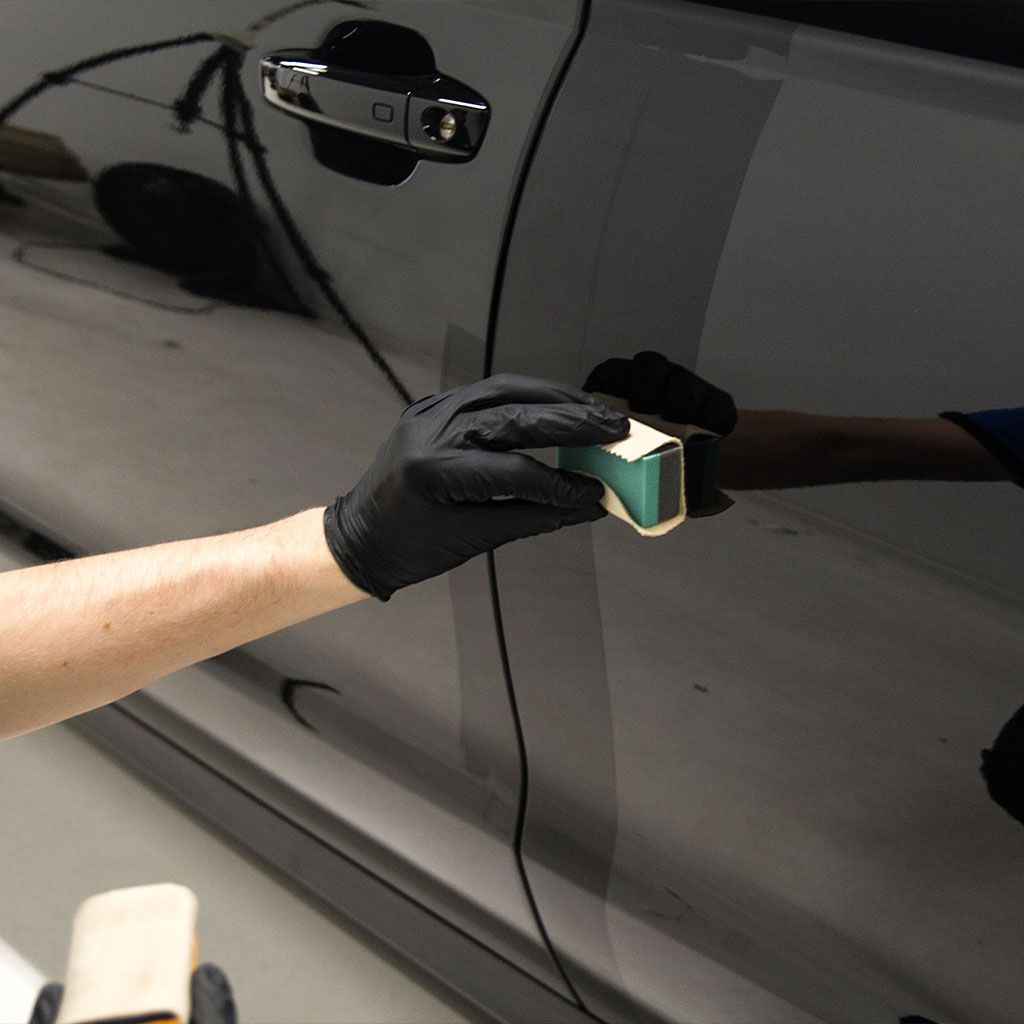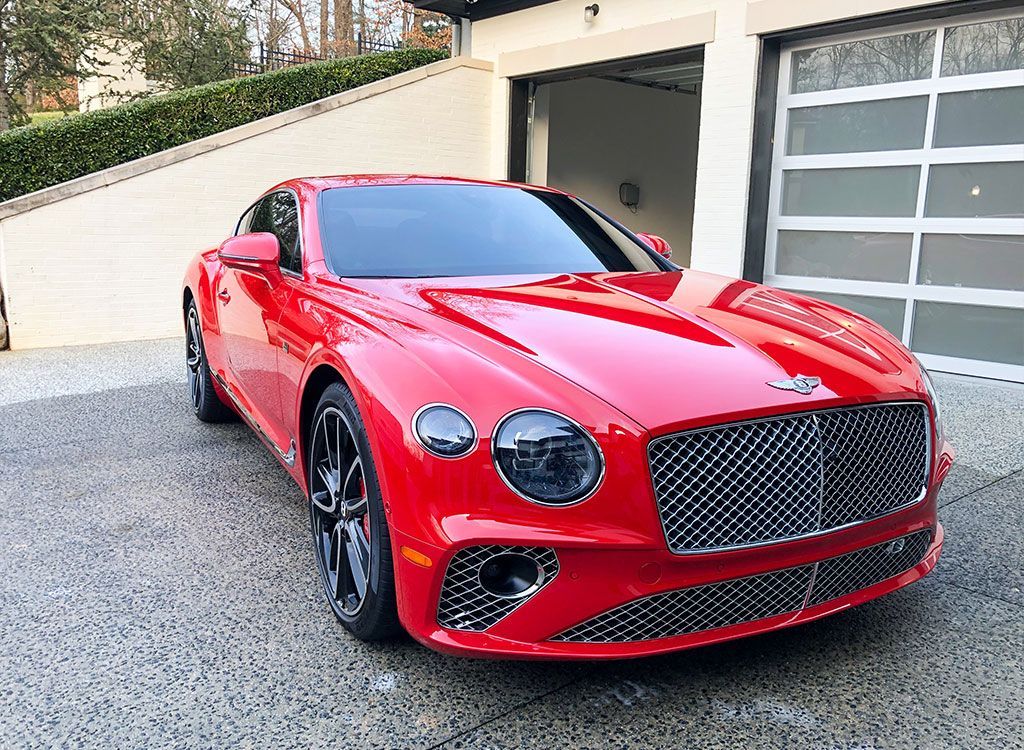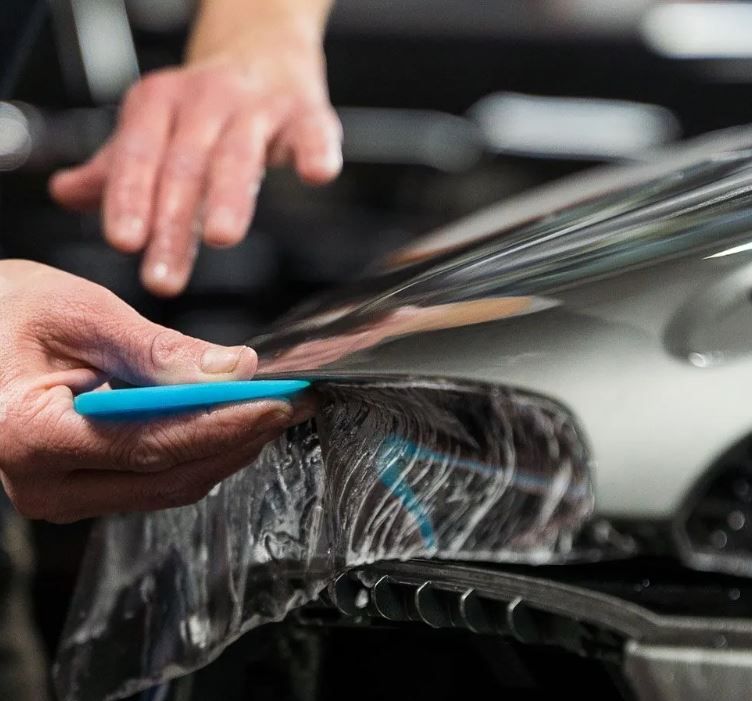Signs That It’s Time to Reapply Your Ceramic Coating for Optimal Protection
GET A QUOTECALL (770) 722-3486
you might be wondering how to keep that striking look and protection it had when first applied. Ceramic coatings can offer fabulous protection for your vehicle’s paint, but over time they can lose their effectiveness. Understanding the signs that suggest it’s time to reapply your ceramic coating is crucial. From the smooth finish you’ve enjoyed turning dull to water no longer beading off like it used to—these signals hint that your ride needs a little TLC. Let’s explore these key indicators together!
Signs that it's time to reapply your ceramic coating include a noticeable loss of water beading on the surface, diminished gloss, and increased susceptibility to dirt and contaminants. If you observe these changes, it is advisable to consider reapplication to maintain optimal protection for your vehicle's paint.
Recognizing Dull Paint and Loss of Gloss
The first sign that your ceramic coating is losing effectiveness often comes in the form of dull paint. You might remember the sparkle and shine of your car when it was freshly coated; that gleaming finish can start to fade over time. Imagine the joy you felt when your car first gleamed in the sunlight, each curve and angle reflecting light like a diamond. When that luster begins to diminish, it can feel disheartening—but it's an important cue that maintenance is needed.
Environmental factors play a significant role in dulling your vehicle's finish. Over time, exposure to UV rays, acid rain, and other pollutants can wear down the ceramic coating, leading to this lackluster appearance. As these elements interact with the surface, they begin to break down those protective properties, which increases the likelihood of scratches and damage to the paint underneath. Think of it as nature's way of challenging your car's defenses—if left unchecked, it could escalate beyond mere aesthetics. Remember: A gloss meter reading below 70 GU (Gloss Units) typically indicates a loss of gloss in automotive paint. This measurement provides a clear numerical representation of how much shine is really left.
What you may not be aware of is that loss of gloss doesn't just indicate cosmetic deterioration; it's a signal that something more critical is happening beneath the surface. The paint’s ability to repel dirt and grime becomes compromised, making both cleaning and maintaining the vehicle more difficult. When contaminants adhere more easily due to lack of protection, it creates a vicious cycle where both appearance and paint integrity suffer. Interestingly, research shows that UV exposure can lead to up to a 30% decrease in gloss over time—especially in regions with high sun exposure. Additionally, signs of decreased hydrophobic properties may also manifest, where water no longer beads on the surface as it once did, indicating that the coating’s performance has diminished significantly.
Recognizing these signs early allows you to take proactive measures before deeper issues arise. Noticing dullness or a reduction in gloss can guide you in determining necessary steps for maintaining your vehicle's finish. As we shift our focus, it’s crucial to understand how various external factors interact with your car's exterior.
Signs of Surface Contaminants
When you run your hand over the car's surface and feel an unexpected roughness, it often signals a buildup of contaminants. This gritty sensation isn't just an inconvenience; it indicates that pollutants have adhered to your vehicle's protective layer, diminishing its effectiveness. Common culprits include industrial fallout, tree sap, bird droppings, and the ever-persistent road grime. As you drive, these particles can embed themselves in the coating, making it imperative to act before the situation worsens.
Over time, if left unaddressed, these contaminants bond tightly with the coating, creating a barrier between your paint and the protective qualities of ceramics. Ideally, a high-quality ceramic coating should form a robust shield against such elements. However, when it wears down—due either to environmental factors or improper maintenance—these materials can directly affect the integrity of your paintwork. The results can be visually displeasing and damaging in the long run.
Some common signs of surface contamination include:
- Tar spots: Sticky residues requiring special solvents for removal.
- Bird droppings: Highly acidic and potentially harmful to paint if not cleaned promptly.
- Road grime: Dirty remnants from highways that can dull your car's finish.
- Tree sap: A sticky substance that hardens over time, making it stubborn to remove.
Many car enthusiasts have shared experiences of feeling overwhelmed by surface imperfections despite regular washing routines. They noticed that their vehicle never felt truly clean, ultimately leading them to comprehend that contaminants remained ensconced within their ceramic protection. Addressing these issues early on is crucial, as they can lead you to more overt visual cues for reapplication. Let’s explore the noticeable signs of fading and color change that signify critical changes in your ceramic coating's performance.
Fading and Color Change
If you start to notice your car’s paint losing its vibrant hue, it's not just a cosmetic issue; it’s a significant signal that your ceramic coating may no longer be effective. A quality ceramic coating acts as a shield against ultraviolet (UV) rays, preventing discoloration and fading for an impressive duration of about 2 to 5 years under normal conditions. However, like all protective measures, this shield can weaken over time due to various environmental factors.
Research indicates that cars exposed to harsh sunlight can experience up to a 30% loss of hydrophobic properties after just 12 months, particularly in regions with intense UV radiation. The effects often vary depending on the paint color too—darker shades like red exhibit noticeable fading more rapidly compared to hues such as silver or white. It’s fascinating how colors react differently to the same environmental stressors; thus, if you've parked your vehicle under the sun without shade, you might find yourself facing more frequent fading issues.
It’s generally expected for paints to reflect more than 70% of their original gloss level, and any decline from this benchmark signifies potential deterioration of your ceramic coating. Recognizing these subtle changes early is imperative for maintaining optimal protection. For example, running your hand along the surface and discovering a texture that feels rough—indicating contaminants—reflects degradation in the protective qualities of your ceramic coating. This tactile feedback matters because it directly correlates with how the coating is performing: smooth surfaces usually remain resistant against environmental nuisances.
Keeping an eye on your car's aesthetics connects with the functional aspect of protecting your investment long term. Be proactive! Observing these signs should prompt you to consider scheduling a decontamination wash or topping up your ceramic coating. Regular maintenance coupled with timely interventions helps extend the life of your protective coat and keeps your vehicle looking stunning while shielding its finish from damage over time. Identifying when performance indicators like water-repelling abilities diminish is essential to ensuring continued protection for your vehicle's finish.
Water No Longer Beading
When you first apply a ceramic coating, one of the most satisfying sights is watching water bead up and roll off the surface like tiny jewels. This phenomenon isn't just aesthetically pleasing; it's an indicator that the coating is working effectively to repel water and contaminants. However, if you begin to notice that those beads are transforming into flat patches instead, it’s a sign that your protective layer is deteriorating.
As time goes on and with exposure to elements like UV rays, road grime, and harsh weather conditions, the once strong hydrophobic properties of the ceramic coating can start to fade. When water fails to bead properly, it no longer acts as a shield for your paint. Instead, water spreads across the surface, allowing dirt and grime to adhere more easily. This not only makes your vehicle look less clean but can also lead to scratches and imperfections in the paint over time. The relationship between water behavior and surface cleanliness is vital; when water doesn't bead, it's likely that contaminants are being trapped against the vehicle's finish, leading to increased maintenance sessions down the line.
To put this in perspective, studies show that within six months following a ceramic coating application, approximately 70% of coatings still retain their hydrophobic properties. Yet by twelve months, that figure drops to around merely 30%. Understanding these statistics allows you to gauge when reapplication is nearing essential.
Here are a few signs that water beading is failing:
- Diminished Beading: Noticeably tight beads are replaced by flat or spreading droplets.
- Feel of Contamination: If you run your hand across the surface and feel roughness or grit, this suggests that dirt is sticking and accumulating.
- Visual Inspection: Areas below wheel arches or along doors often show wear first; pay attention here!
Monitoring the duration since your last application paves the way for understanding how well your protective measures are holding up, ensuring both appearance and longevity of your vehicle's exterior finish remain intact.
Duration Since Last Application
Regularly assessing how much time has passed since your last application is crucial for ensuring your ceramic coating remains effective. On average, high-quality ceramic coatings provide protection for about 2 to 5 years, but various factors can influence that lifespan. For instance, environmental conditions—like exposure to extreme sunlight or salty roads—can accelerate degradation. Imagine driving through a harsh winter where road salt and grime cling to your vehicle; this can wear down the protective layer much quicker than expected. According to recent studies, vehicles subjected to tough environments often experience significant deterioration. Approximately 30% of users reported diminished hydrophobic properties within a year, while 50% observed considerable wear after just two years. These statistics indicate that neglecting the timeline could lead to compromised protection.
It is essential to regularly consult the warranty period provided by your ceramic coating's manufacturer. This warranty not only sets expectations but also serves as a reminder of when reapplication might be necessary. For instance, suppose you find yourself nearing the end of that warranty and notice any concerning signs—like water not beading properly or increased grime on the surface—then that's a clear indicator it’s time for an update. Furthermore, routine evaluations can help in identifying subtle changes that may not be immediately visible. Conditions such as reduced gloss or a rougher surface when you run your hand over it are telling signs that the coating might need attention. Schedule assessments based on your vehicle's surroundings and weather exposure; knowing when it was last treated enables you to remain vigilant about its upkeep.
Understanding these factors is vital in ensuring your vehicle remains protected and visually appealing. As we continue, we'll explore strategies that contribute to prolonging this protective layer for even greater durability and performance.
Maintaining Coating Longevity
Proper maintenance of your ceramic coating isn't just a good idea; it’s essential for extending its lifespan. Washing your car regularly with pH-neutral shampoos is critical because these soaps won't compromise the protective layer like harsh detergents can. It’s reassuring that with just a little effort, you can significantly increase the durability of that shiny finish. Consistent cleaning helps remove road grime and other contaminants that may cling to the surface. The use of quick detailer sprays between full applications often arises in discussions about maintenance. Some detailers advocate for their use, claiming that they provide an extra layer of protection, while others caution that they may simply disguise underlying issues, such as diminished water beading or surface contamination. After all, masking those signs may only exacerbate the problem down the line.
Think of quick detailers as a band-aid—they may help in the short term but don’t address any deeper concerns. It's crucial to avoid automatic car washes equipped with abrasive brushes since they can damage the ceramic coating rather than enhance it. Hand washing not only maintains the sleek appearance of your vehicle but also allows for up-close inspection for any early signs of wear or degradation. Use a gentle touch and microfiber cloths to safeguard the integrity of your vehicle’s exterior. Maintaining your ceramic coating isn't just about washing; regular inspections are also vital. You’d be surprised how just spending a few moments checking for decreased gloss or fading water repellency can inform you when it’s time for reapplication. Catching these issues early can prevent more significant problems later on.
By implementing these maintenance strategies, you will preserve the stunning appearance of your vehicle while safeguarding its long-term value and functionality. Keeping up with these practices ensures that your investment in ceramic coatings truly pays off over time, allowing you to enjoy a pristine ride every time you step behind the wheel. In summary, proper care and timely inspections not only enhance your driving experience but also ensure that your vehicle remains protected against environmental threats. Prioritizing maintenance allows you to maximize both aesthetics and functionality.
Marietta’s Go-To for Ceramic Coating Excellence
At LeJeune Ceramic Coating & Paint Protection, we bring unmatched ceramic coating services to drivers in Marietta, GA, who want their vehicles to stay glossy and protected, day after day. Our high-performance coatings create a durable, hydrophobic layer that resists UV damage, dirt, and road grime—so your ride stays cleaner and shinier with less effort. Whether it's a daily driver or a weekend showpiece, we treat every vehicle like it’s our own. Book your ceramic coating service today and enjoy lasting protection with showroom-worthy results!

